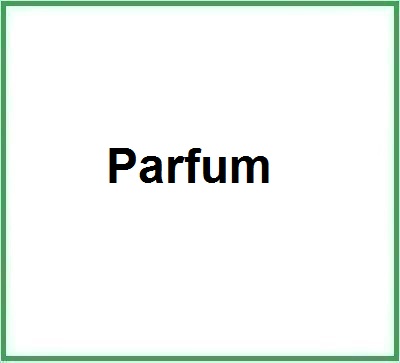BACKGROUND: Many natural substances are classified as dangerous substances according to the European regulation on classification and labelling. Are they used in natural personal care products today? One hundred ingredient lists were analyzed to find this out. RESULTS: All products with natural substances contained dangerous natural substances or they contained natural substances, for which the information about their classification as dangerous substances is not available. 54 natural substances quoted in the ingredient lists were found to be classified, with 37 substances being classified due to hazardous effects for skin and eyes. However, the most frequently used natural substances are not classified as dangerous. Natural substances are multi-constituent compounds, leading to two main problems in personal care products: the potential interactions of a multitude of substances and the fact that dangerous constituents are not disclosed in the ingredient lists. For example, the fragrance allergens citral, farnesol, limonene, and linalool are frequent components of the natural substances employed. In addition, 82 products listed allergenic fragrance ingredients as single substances in their ingredient lists. Recommendations for sensitive skin in a product's name do not imply that the '26 fragrance allergens' are omitted. Furthermore, 80 products listed 'parfum'/'aroma', and 50 products listed ethanol. CONCLUSIONS: The data show that the loopholes for natural substances and for personal care products in the present European chemical legislation (e.g. the exception for classification and labelling of cosmetic products and the exception for information transfer in the supply chain) are not in line with an adequate consumer and environmental protection (1).
Cosmetics, fragrances, and botanicals are important causes of allergic contact dermatitis. Identifying and avoiding the causative allergens can pose a challenge to both the patient and the dermatologist. The site of involvement can give the investigator clues to the cause of the eruption in many cases. Fragrances and preservatives are the two most clinically relevant allergens in cosmetics. Botanicals are being added to cosmetics because of consumer demand and are now being recognized as sources of allergy as well. Patch testing allows for the detection of allergens that are potentially relevant in the genesis of the patient's eczema. Common skin-care product allergens, including fragrances and botanicals as well as those found in sunscreen, nail, and hair-care products, are reviewed. Practical methods of allergen avoidance are also discussed (2).
Contact allergy to fragrance ingredients is frequent. Recommendations and regulations of some of the most frequent and potent fragrance allergens have recently been introduced. To investigate current exposures to 4 important fragrance allergens in hydroalcoholic cosmetic products. 25 popular perfume products of Danish as well as international brands were purchased from the Danish retail market. Contents of 4 important fragrance allergens, isoeugenol, hydroxy-iso-hexyl 3-cyclohexene carboxaldehyde (HICC, Lyral), were determined by gas chromatography-mass spectrometry, and atranol and chloro-atranol were determined by liquid chromatography-tandem mass spectrometry. Isoeugenol was found in 56%, HICC in 72%, atranol in 59%, and chloro-atranol in 36% of the 22 eau de toilette/eau de parfum products. The concentrations of isoeugenol were, in all products, below the recommended maximum concentration of 0.02%. HICC reached a maximum of 0.2%, which is 10-fold higher than maximum tolerable concentration considered safe by the EU Scientific Committee. The median concentrations of atranol and chloro-atranol in the investigated products were similar to those found in similar products in 2003. A significant decrease in the frequency of presence of chloro-atranol in the products was observed. There is still a wide-spread exposure to potent fragrance allergens in perfumes (3).
BACKGROUND: Fragrance ingredients are a common cause of contact allergy. Very little is known about these patients' strategies to manage their disease and the effect on their daily lives. OBJECTIVES: To investigate if patients with diagnosed fragrance contact allergy used scented products, how they identified tolerated products, and if fragrance allergy affected their daily living. METHOD: One hundred and forty-seven patients diagnosed with fragrance contact allergy in a 20-month period were included and received a postal questionnaire concerning the subjects of the study. One hundred and seventeen (79.6%) replied. RESULTS: In total, 53/117 (45.3%) responded that they had found some scented products that they could tolerate. Thirty-seven (31.6%) had not tried to find any scented products and 26 (22%) had tried but could not find any. The methods most often used were trying different products and reading the ingredient label. Of the total respondents, 17.1% reported sick-leave due to fragrance allergy and 45.3% found that fragrance allergy significantly affected their daily living. CONCLUSION: Many patients with fragrance contact allergy succeeded in finding some scented products, which they could tolerate, e.g. by use of ingredient labelling, but a significant proportion had continued skin problems. Almost half of the patients perceived that fragrance allergy significantly affected their daily lives (4).
References_______________________________________________________
(1) Natural personal care products-analysis of ingredient lists and legal situation.
Klaschka U. - Environ Sci Eur. 2016;28(1):8. Epub 2016 Mar 24.
(2) Ortiz KJ, Yiannias JA. Contact dermatitis to cosmetics, fragrances, and botanicals. Dermatol Ther. 2004;17(3):264-71.
(3) Rastogi SC, Johansen JD, Bossi R. Selected important fragrance sensitizers in perfumes—current exposures. Contact Dermatitis. 2007 Apr;56(4):201-4.
(4) Lysdal SH, Johansen JD. Fragrance contact allergic patients: strategies for use of cosmetic products and perceived impact on life situation. Contact Dermatitis. 2009;61:320–324. doi: 10.1111/j.1600-0536.2009.01626.x
![]() Parfum
Parfum 

